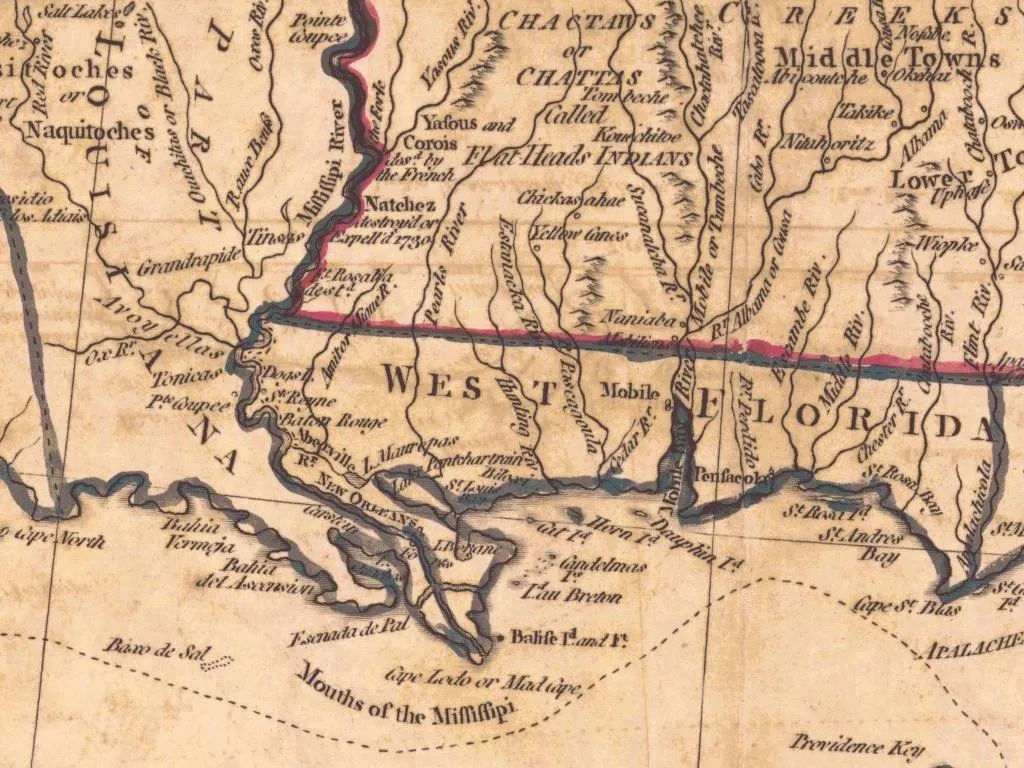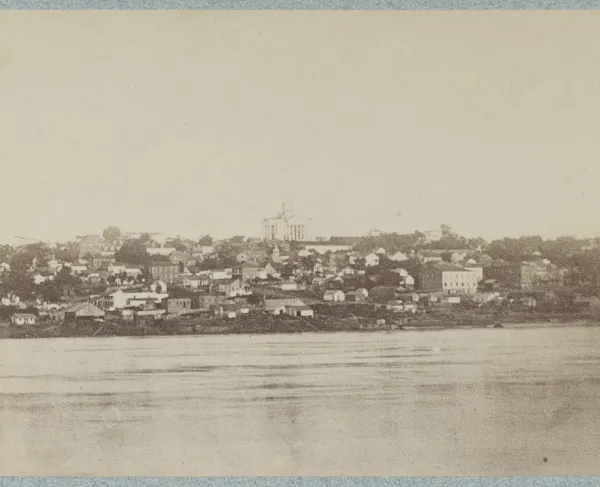Acquisition of Florida

1803 Map of the Floridas with American claims in mint green
The acquisition of Florida is sometimes described as the first instance of American Manifest Destiny. The slow process, beginning in 1795, found the United States continually acquiring small pieces, despite Spanish protestations. Finally concluding with the Adams-Onis Treaty in 1821, the acquisition of Florida proved vital for American control of the Southeast.
Prior to American acquisition, Florida was a Spanish Colony for nearly 300 years. The oldest European colony in the modern continental United States, Spain first claimed it in 1513 when conquistador Juan Ponce De Leon landed on the peninsula. Used as a trade hub and strategic defensive military outpost, Florida was an important part of the Spanish Caribbean. Native Americans were granted greater autonomy in Florida compared to other European colonies, likely due to sparse European settlement. Despite flare-ups, like the Guale Rebellion of 1597 and the Apalachee Rebellion of 1647, relations between the Spanish and Native Americans remained amicable into the 18th Century. Florida also became a safe haven for runaway slaves from the Thirteen British Colonies to the north.
The Spanish and British Empires, with their neighboring colonies in the Southeast, found themselves in perpetual conflict during the 18th Century. The largest of these conflicts, the French and Indian War (Seven Years War), affected Florida directly: Spain ceded it to Great Britain to regain control of Cuba. The British split the territory into East and West Florida and quickly settled the land. However, their control of the Floridas proved short. As loyal colonies during the American Revolutionary War, the Floridas endured French, Spanish, and American attacks and served as a refuge for Southern British loyalists. At the war’s conclusion with the Peace of Paris, the Florida colonies were returned to Spain.
Over the course of the next forty years, the young, expansionist United States slowly encroached on the Floridas. The first Spanish concession came under the 1795 Pinckney Treaty, which ceded the disputed lands between the 31st and 32nd 28” parallels to the United States. With the Louisiana Purchase in 1803, new territorial disputes emerged. The United States claimed that the lands between the Mississippi and Perdido Rivers—nearly all of West Florida—were included in the purchase since they were historic parts of French Louisiana. The Spanish disagreed, reasoning that these lands were not returned to France in 1800 and therefore Napoleon did not sell them to the U.S. This territory was not insignificant either. Spain either blocked or charged high duties on American access to the Mobile and Alabama Rivers, as their mouths were in West Florida, and limited access to the vital Mississippi.

As the Spanish Bourbon regime weakened during the Napoleonic Wars, President James Madison feared the Floridas would fall back into British hands. Before he could decide on the next steps, however, the growing American population in West Florida had already acted. American settlers and planters began protesting and attacking Spanish rule in June 1810, and three days after the capture of the Spanish fort in Baton Rouge on September 23, they declared their independence as the Republic of West Florida. The republic only lasted two and a half months. On December 9, Governor Fulwar Skipwith agreed to a U.S. occupation, and weeks later, on January 15, 1811, Congress authorized the occupation. Spain refused to acknowledge the act, still claiming full control of West Florida.
The next year, Congress authorized the full occupation of the land west of the Perdido River as a part of historic Louisiana. On April 15, 1813, Major General James Wilkinson marched into Mobile, building Fort Bowyer to establish American control. Meanwhile, in East Florida, President Madison ordered General George Matthews to negotiate with the Spanish governor for the territory’s acquisition. Instead, Matthews recruited Georgians and Americo-Floridians to form an invasion militia. Occupying Amelia Island on March 27, 1812, Matthews declared the Republic of East Florida independent. With U.S. troops aiding closely behind, the militia occupied Fernandina, a town north of St. Augustine. Fear of war with Spain led the Senate to reject a proposed annexation of East Florida, and American troops withdrew from Fernandina on May 6, 1813.
The simultaneous outbreak of the War of 1812 proved eventful despite Spain remaining neutral. British-aligned Native Americans often raided across the border into Georgia and the Mississippi territory, causing continual conflict with local American militias. General Buckner Harris led a particularly violent campaign against the Alachua Seminoles in East Florida, destroying and burning many of their villages. Further west, General Andrew Jackson led a siege on the British garrison in Pensacola, successfully capturing the city on September 15, 1814. The war, despite the return of all captured territory, signaled a great weakening of Spanish control of the Floridas.

Neither conflict with Floridian Native American nor American expansionist goals subsided after the War. Creeks and Seminoles, among others, continued raiding settlements in the Old Southwest and harboring runaway slaves. In retaliation, U.S. forces under General Jackson invaded the Floridas in 1816 and again in 1818. The First Seminole War was a brutal campaign against Native Americans, the first of a series of wars with the Seminoles. It also saw the destruction of Negro Fort, a base for free African Americans, as its presence challenged Southern plantation slavery. The 1818 expedition also saw the recapture of Pensacola.
By the end of 1818, the United States had de facto control of West Florida and much of East Florida. Spain, crushed after the bloody Peninsular War in Europe and dealing with rebellions across its American colonies, could not mount a challenge to Jackson and American settlers. Finally, on February 22, 1819, they agreed to hand over East and West Florida to the United States. In return, the U.S. ceded claims in Texas and assumed $5 million of Spanish debt owed to American citizens. Exactly two years later, the Adams-Onis Treaty was ratified.
The two Floridas merged into the singular Florida Territory in 1822. Acquisition to the United States would not end the conflicts with Native Americans: the Second Seminole War, waged from 1835 to 1842, would be the longest and costliest conflict between the U.S. and Native Americans. Twenty-four years after its acquisition, on March 3, 1845, Florida became the 27th state. However, it would not stay in the Union for long, as in 1861, it would become one of the founding states of the Confederacy.





